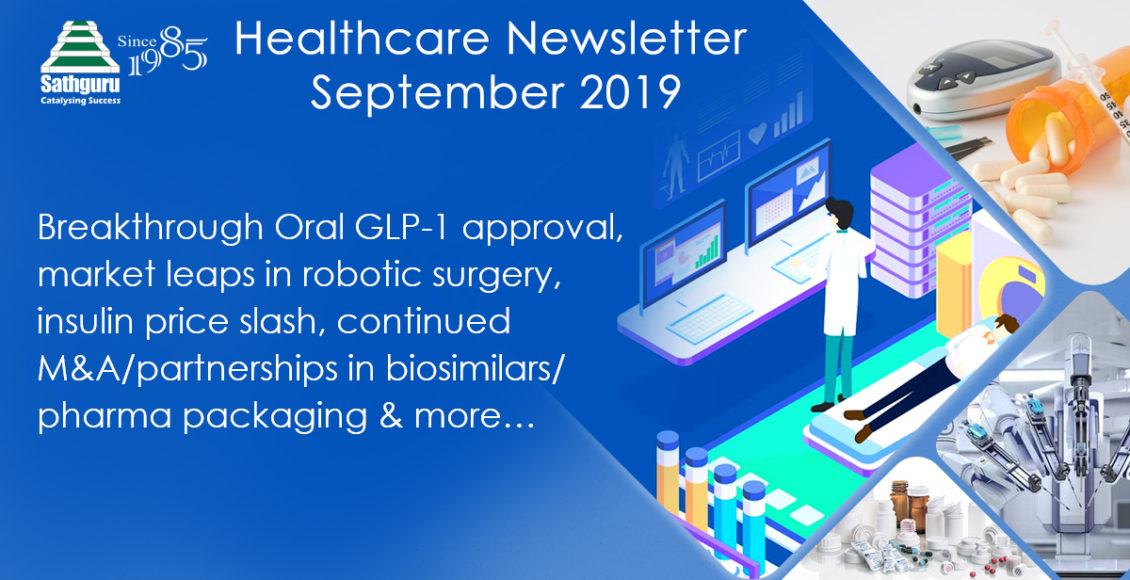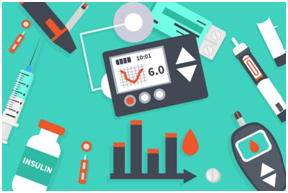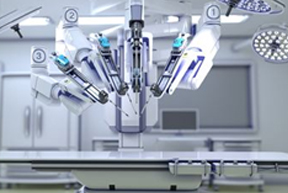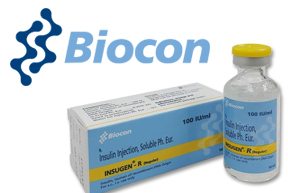

Managing Type-2 diabetes is complex and self-care necessitates careful consideration of lifestyle, co-morbidities and costs. Introduction of GLP-1 receptor agonist (RA), back in 2005, was touted as a paradigm shift in the management of diabetes since it not only offered better glycemic control over basal insulin but also possessed lower risk of hypoglycemia and helped with weight reduction. In spite of its numerous benefits and superior clinical data, it suffered setback from being an injectable that constrained overall adoption level. In a game changing development this month, the US FDA approved Novo Nordisk’s Rybelsus (semaglutide), the first oral GLP-1. The oral GLP-1 drug complements the GLP-1 – insulin combination drugs recently approved that reduce the need for an additional poke in an insulin dependent patient prescribed GLP-1. Oral therapy would dramatically improve patient adherence and compliance to GLP-1 treatment and the fact that it’s priced at par with its injectable counterparts makes it fairly convenient for patients to switch from injectable to oral therapy.
This development could potentially change the composition of the diabetes drug market and help GLP-1 analogs finally gain the glory they deserve. We anticipate that expanded adoption of GLP-1 and resultant increase in market size will counter anticipated market erosion on impending genericization of currently marketed injectable GLP-1 analog drugs.
Approval of an oral peptide drug also reduces scientific concerns around the diminished bioavailability and lower potency of oral peptides on physiochemical action of the gastrointestinal tract and opens up possibility for oral formulation development for other peptide drugs.
Even beyond GLP-1, September proved to be a diabetes friendly month with several next generation treatments and diabetes management devices gaining momentum. Vertex announced its plan to acquire Semma Therapeutics, an early-stage biotech that is developing stem cell therapies for type 1 diabetes, for $950 million in cash. Semma’s potentially curative cell therapy packs two innovations together: production of large quantities of functional human pancreatic beta cells that restore insulin secretion and a novel device that encapsulates and protects these cells from the immune system, enabling durable implantation without the need for ongoing immunosuppressive therapy. Although the technology has only been validated in animal models till now, it holds promising potential to offer a breakthrough stem cell treatment for Type-1 Diabetes. Abbott Laboratories and Sanofi struck a strategic partnership to integrate glucose sensing and insulin delivery technologies to help improve diabetes management in patients by combining Abbott’s FreeStyle Libre technology with Sanofi′s insulin dosing information. Pooling data from both the sources will enable both patients and their doctors to make better-informed treatment decisions around medication, nutrition, and lifestyle. Medtronic and Novo Nordisk also entered into a partnership to integrate insulin dosing data from future Novo Nordisk smart insulin pens into Continuous Glucose Monitoring (CGM) devices from Medtronic with a similar goal of providing data-driven solutions for improving diabetes treatment and management. September 2019 has emphatically flagged that next generation care in diabetes is around the corner – and, technology will be integral to smarter diabetes care.

The transformative power of AI when applied to healthcare is truly life-changing, revolutionizing practices and promising better outcomes across diagnostics, drug discovery, hospital and patient care, insurance etc. Between 2016 and 2019, the number of AI based algorithms approved by the FDA for various indications have gone up by almost 500%, with 23 approvals in just 2018. Radiology and cardiology happen to be the most algorithm-friendly medical specialties with several global ventures targeting broad spectrum of opportunities. September witnessed a number of developments in medical AI, hottest being the FDA approval of GE’s AI-powered mobile X-ray device, the first of its kind. Dubbed Critical CareSuite, the device not only enables quick and efficient detection of pneumothorax but also alerts the physicians and prepares a patient priority list to efficiently manage the workload of specialists and provide timely care to critical patients. This flags commercial foray of the large medical device companies into AI led diagnostics and signifies beginning of more active market creation complementing the active innovation ecosystem.
As approvals emerge and capital supports advancement of pipeline products, there is still an active landscape of partnerships powering new possibilities. AI in healthcare calls for convergent strengths across clinical expertise and technology platform creators. Over the last five years, momentum has progressively expanded in such partnerships between clinical entities, technology creators, and medical device and diagnostic companies. The latest of such partnerships announced this month, is one between Google and Mayo Clinic that aims to develop machine-learning models for different diseases, AI enabled diagnostics and virtual care offerings. IBM Watson and Guerbet, a French medical imaging contrast agents and solutions provider, also entered into a strategic partnership to co-develop and co-commercialize an AI-based tool that can assist in detection, segmentation, characterization and monitoring of prostate cancer lesions. This would enable more informed and rapid diagnosis of prostate cancer, an indication where current diagnostic methods are limited by their ability to accurately identify and differentiate between critical lesions requiring immediate treatment and those requiring only active surveillance. This builds on the previously announced collaboration between these two companies for liver cancer diagnosis. The active partnership landscape strengthens the foundation for future products and furthers revvs up the global development engine.

As the promise of an active commercial market for biosimilars in US and key global markets finally inches closer to being a tangible reality, partnership interest in leading companies gains momentum.
This month Sandoz announced a licensing agreement with Polpharma Biologics for exclusive global commercialization rights for natalizumab biosimilar. The asset is currently in Phase III development; and Polpharma Biologics will maintain responsibilities for development, manufacturing and supply of biosimilar natalizumab and Sandoz will handle global commercialization and distribution. Sandoz decision is a refreshing announcement in the light of the decision made not too long ago to shelve the rituximab program in US on FDA requesting for more data post submission. The decision is also refreshing considering that natalizumab is a disease-modifying therapy (DMT) targeting relapsing-remitting multiple sclerosis (RRMS), a rare disease with additional commercial complexity in the biosimilars market.
The month was also significant for global capacity expansion in biologics across the continuum of R&D to manufacturing. GSK invested $120 million for expansion of its US biopharmaceutical manufacturing facility to support its growing biologics pipeline of oncology and other specialty medicines. Two other biosimilar developers: Fresenius Kabi and Biocon announced expansion of their research and development capabilities with acquisition of new sites in Eysins, Switzerland and Chennai, India respectively, reinforcing expanding investment appetite that dovetails commercial market creation.
Continued industry interest in pipeline development is complemented by regulatory action as governments continue work towards improving access to critical drugs. Two separate bills were introduced in the US Congress to boost biosimilar market access: reimbursements for biosimilars in Medicare Part B would temporarily increase to 8% of the average sales price (ASP), up from the current 6% of the ASP. The larger payments would last for 5 years in an effort to help increase their utilization by doctors administering the drugs and to help biosimilars gain market share by being available at a lower cost than the biologic. The second bill, Advancing Education on Biosimilars Act of 2019 would create federal programs to promote biosimilars and educate both healthcare providers and patients about biologics and biosimilars, including educating them about biosimilar interchangeability and processes for reporting adverse events. With concerted efforts from all stakeholders, we look forward with hope to the promise of more accelerated market creation turning reality within the next two years.

The introduction of the first robotic surgery system, Da Vinci, in 2000, broke new grounds and in a span of two decades market for surgical systems has evolved slowly but progressively. This month, Medtronic unveiling its robotic surgery system, Hugo RAS System is a very significant development for global markets. It emphasizes strategic foray of large medical device majors in the space; and implies potential disruption of a market currently dominated by Intuitive Medical’s Da Vinci system. This follows Medtronic’s launch of spine surgery robot Mazor X Stealth, earlier this year that was co-developed by Medtronic and Mazor Robotics (that Medtronic acquired in late 2018). Numerous mega-deals came to fruition recently in the robotic surgery space, latest being Stryker’s acquisition of Mobius Imaging and Cardan Robotics for $500M. Earlier this year J&J acquired robotic surgery firm Auris Health for a whopping $3.4 billion. While no product from the stable has been launched yet, it implies a strong possibility of J&J further propelling thrust from large med-tech companies on robotic surgery. This substantially enhanced investment appetite in the segment by med-tech majors is reflective of the markets coming of age and potential ahead for quantum leap in adoption.
While the large companies jumping in greatly strengthens the market outlook, ventures across regions continue to add to pipeline momentum and potential for breakthrough technologies. Keranova, a French start-up specializing in innovative ophthalmological surgical equipment, recently raised $26.5 million for an ophthalmic surgical robot. This would be the first robot-assisted laser in the world to be able to perform automated photoemulsification of cataractous lenses that currently relies on manual equipment. The first clinical prototype for a robotized laser was produced through a series of major innovations protected by 11 patent families and successfully treated its first patients in December 2018. Another 5-year old UK based venture, CMR Surgical, is planning to launch its first robotic surgery system named Versius Surgical System by the year-end in Europe and Asia and this month it raised $240 million through a Series C round to gear up for the said launch and expansion into new territories. The robot has already completed its first-in-human surgical procedures in May 2019 in India featuring patients with gynecological and gastrointestinal disorders. Given these 360 degree developments, we are excited that robotic surgery is now a mainstream market and transformative potential in the OR may finally be realized near term.

In a transformative move, Biocon announced slashing its recombinant insulin price to 10 cents (roughly Rs.7) from the $5 (Rs.350) currently in low and middle income countries (LMIC). This announcement addresses the widespread issue of access to much needed care for chronic conditions. The move would break affordability barrier in LMIC countries, considered to account for more than 80% of the global diabetes burden.
This is reflective of industry taking cognizance of the fact that re-shaping of healthcare access models is needed to address the growing epidemic of non-communicable diseases. A critical move that will facilitate access to the drug while also creating possibility of sustainable demand shaping.
This transformative move paves the way for aggregated procurement and collaboration with agencies such as WHO. Akin to a model successful evolved by the vaccine industry, aggregation of demand, volume commitments and visibility to manufacturers has substantial potential to help shape both supply and demand in areas of public health priorities.
The promising announcement comes at an opportune timing with countries such as India & China considering measures for wider healthcare coverage and drug access. With engagement of strong public health catalysts, this decision can be the trigger for market shaping to go beyond these two Asian giants to other LMIC countries. We are most encouraged about this setting the stage and potentially catalyzing needed aggregation models to be considered for market evolution in LMIC for high value life-saving drugs and biosimilars at large. Onwards and upwards from here.

Growth opportunity in the pharma packaging space continue to attract interest of PE funds as well as strategic investors. Latest mega-deal is Bilcare’s acquisition by private equity investor Lindsay Goldberg valued. Bilcare has annual sales of about $329 million and was valued at around$ 279-330 million. It is notable that Lindsay Goldberg also has investments in other packaging groups – Weener, Schur Flexibles and Paccor.
Bormioli Pharma also acquired German company R&GBeteiligungs, a plastics and glass primary packaging provider. Acquisition would enable Bormioli to expand its presence in the German and Northern European markets, expand its current product range with complementary products and strengthen its manufacturing footprint and industrial competences.
Constantia Flexibles also turned to acquisition to expand its global capacity. Their most recent acquisition is a majority stake in the Russian group of companies TT. Constantia TT is the second plant of Constantia Flexibles in Russia, the first being Constantia Kuban, located in Timashevsk. The two plants would together help them address the large demand of pharma packaging in Russia, Uzbekistan and Kazakhstan. We anticipate continued focus on consolidation and M&A in the pharma packaging sector.

Featured publication
Sathguru Foot Print
-
- CII Lifesciences Conclave Sathguru’s healthcare practice lead Pushpa Vijayaraghavan deliberates way forward for Indian Biopharma industry at the CII Lifesciences conclave
- Conference on AI, Analytics and Automation Sathguru’s healthcare practice lead Pushpa Vijaraghavan discusses AI and in-silico modeling in drug discovery and development at Express Pharma’s R&D conference
Sathguru Highlights
-
-
- Sathguru volunteers for STEM Annual Summit- 2019. Be a part of a global community of tech transfer professionals
Click here to learn more - Sathguru’s affiiate firm KVA on transformational tax reform in India. Read More
- Sathguru volunteers for STEM Annual Summit- 2019. Be a part of a global community of tech transfer professionals
-
Connect with us at lifesciences@sathguru.com to learn more.
 Grow Beyond
Grow Beyond 

